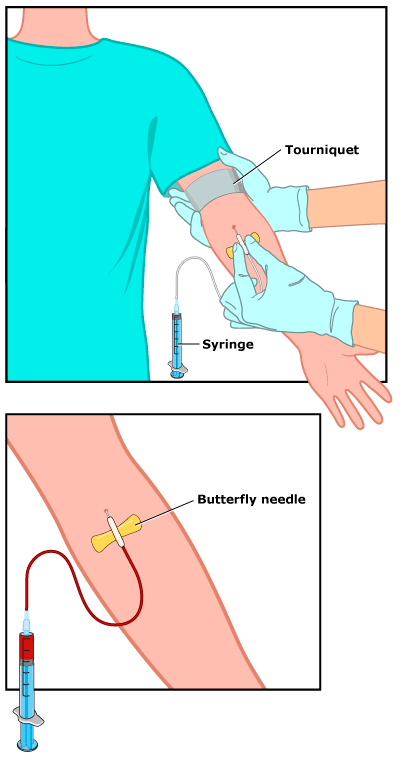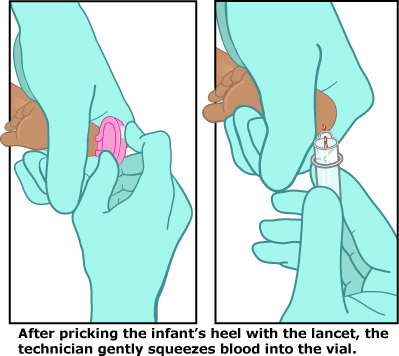Blood Test: Valproic Acid
Article Translations: (Spanish)
What It Is
A valproic acid test measures the amount of valproic acid, which is an anticonvulsant medicine, in a blood sample. Valproic acid is prescribed primarily to prevent seizures.
The seizure disorder epilepsy is a nervous system condition that causes electrical signals in the brain to misfire. These disruptions lead to temporary communication problems between nerve cells, resulting in symptoms that range from mild (blinking or staring into space) to severe (losing consciousness or whole body shaking).
Seizures may be caused by many different conditions, including infections such as meningitis or encephalitis; a congenital (present from birth) brain or blood vessel malformation; brain trauma due to an accident or lack of oxygen at birth; a metabolic or genetic disorder; brain tumor; or stroke. Frequently, the cause is unknown.
Valproic acid also may be used to treat bipolar disorder, a condition characterized by periods of intensely high and low moods, or to help prevent migraine headaches. In many cases, it's used in conjunction with other medications for maximum effectiveness.
Why It's Done
Valproic acid blood levels must stay within a specific range for the drug to work properly. Doctors must prescribe enough to prevent symptoms, but not so much so as to cause unwanted side effects. One of the most serious side effects of valproic acid is liver damage. Because the rate at which the liver can process the drug varies from person to person, the test is often performed at regular intervals throughout treatment.
If a current dose of valproic acid seems to be working, regular blood tests can help ensure that the dose remains steady. If symptoms don't seem to be diminishing or a child is experiencing side effects, the test can be used to adjust the medication to a more effective dose. This kind of close monitoring is especially important if other medications are added to the treatment plan, since some can change the way the body processes valproic acid.
Preparation
No special preparations are needed for this test. Your doctor may recommend that the test be performed at a certain time — for example, just before your child's daily dose — since valproic acid levels may fluctuate throughout the day. Also, it's important to let the doctor know about any other medications your child may be taking, as these can affect the results.
On the day of the test, it may help to have your child wear a short-sleeve shirt to allow easier access for the technician who will be drawing the blood.
The Procedure
A health professional will usually draw the blood from a vein. For an infant, the blood may be obtained by puncturing the heel with a small needle (lancet). If the blood is being drawn from a vein, the skin surface is cleaned with antiseptic and an elastic band (tourniquet) is placed around the upper arm to apply pressure and cause the veins to swell with blood. A needle is inserted into a vein (usually in the arm inside of the elbow or on the back of the hand) and blood is withdrawn and collected in a vial or syringe.
After the procedure, the elastic band is removed. Once the blood has been collected, the needle is removed and the area is covered with cotton or a bandage to stop the bleeding. Collecting the blood for the test will only take a few minutes.


What to Expect
Either method (heel or vein withdrawal) of collecting a blood sample is only temporarily uncomfortable and can feel like a quick pinprick. Afterward, there may be some mild bruising, which should go away in a day or so.
Getting the Results
The blood sample will be processed by a machine. The results are commonly available after a few hours or the next day.
Risks
The valproic acid test is considered a safe procedure. However, as with many medical tests, some problems can happen with having blood drawn. These include:
- fainting or feeling lightheaded
- hematoma (blood accumulating under the skin causing a lump or bruise)
- pain associated with multiple punctures to locate a vein
Helping Your Child
Having a blood test is relatively painless. Still, many children are afraid of needles. Explaining the test in terms your child can understand might help ease some of the fear.
Allow your child to ask the technician any questions he or she might have. Tell your child to try to relax and stay still during the procedure, as tensing muscles and moving can make it harder and more painful to draw blood. It also may help for your child to look away when the needle is being inserted into the skin.
If You Have Questions
If you have questions about the valproic acid test, speak with your doctor. You can also talk to the technician before the procedure.
Note: All information is for educational purposes only. For specific medical advice, diagnoses, and treatment, consult your doctor.
© 1995-2024 KidsHealth ® All rights reserved. Images provided by iStock, Getty Images, Corbis, Veer, Science Photo Library, Science Source Images, Shutterstock, and Clipart.com

